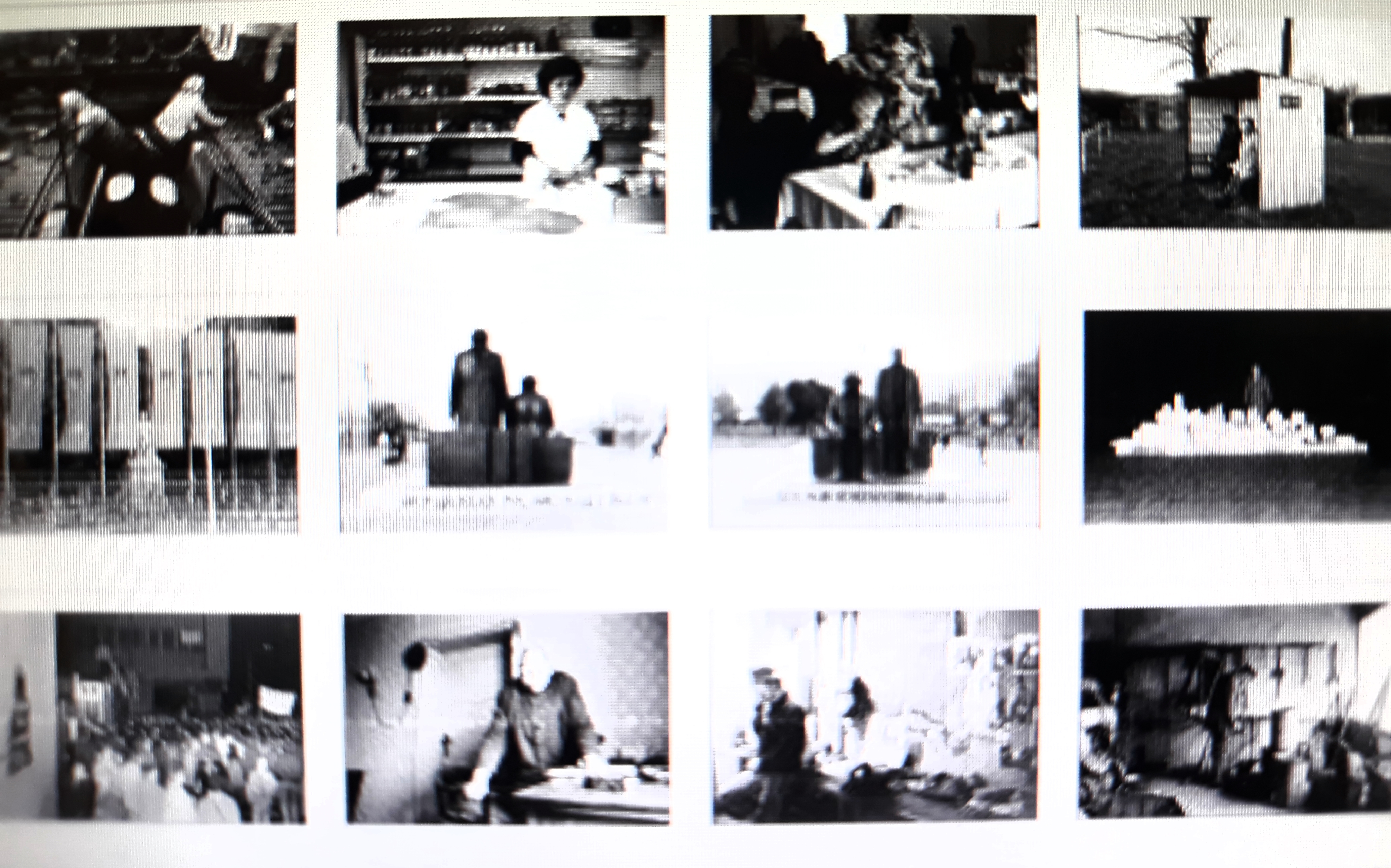Jürgen Nagel's artistic production spans from photographic material to literature, which eventually brought him into the attention of the Stasi between 1979 and 1981. Besides officially commissioned documented events, Nagel actively engaged in immortalising motifs encountered in his immediate environment in the GDR. The photographer made a clear division in his work between commissioned photography for fairs, journals, industry and artistic production.
Nagel used his state sponsored income to support his artistic production dedicated to other themes relevant for the artist. For these, Nagel worked predominantly with black and white film, in comparison to his commissioned works for which he often used colored films. These varied from street scenes to portraits, to crumbling buildings and construction sites in Berlin Marzahn, to the Jewish cemeteries in Berlin, to parades, and slogans. Nevertheless, the November demonstrations in 1989 in Berlin and the last days of the GDR in October 1990 have been thoroughly documented. Nagel often employed the format of series, the reason for which his images can be best understood through the established connections between them. Among his most significant series one can account "Begegnungen" (Portraits of Berlin artists, 1976), "Spurensicherung" (Documentary collection of slogans from the GDR, 1979 - 1989), "Marzahn III" (Documentary collection, Life under Concrete 1981? 1990) und "Zum Beispiel Cismar" (Portraits cycle, Cismar 1997).
Nagels’ photos have been exhibited and eventually purchased during the GDR on the art exhibitions for the Protestant Church Days in 1983, the Museum for German History in Berlin in 1984 and 1985, and by the State Arts Collection Dresden (Kupferstich-Kabinett der Staatlichen Kunstsammlungen Dresden). Following the German reunification, further institutions purchased his photos, among these: Märkisches Museum (Berlin), Berlinische Galerie, Heimatmuseum Marzahn, Matthias-Domaschk Archive, Museum of Daily Life Culture of the GDR Eisenhütenstadt, Musée de l'Elysée Lausanne and various private collections. Nagel retained all negatives in his personal archive.
Parts of the photography documentation of Jürgen Nagel were acquired also by the German Historical Museum already in 1991. Aware of the political changes, the photographer approached the German Historical Museum with the purpose of sharing his works with the museum already in 1990. Despite the fact that the museum at the time was not having a museum's building of its own yet, but only projected a new construction, the museum eventually purchased the user rights for a series of Jürgen Nagel photos. These are significant for documenting everyday life during the GDR, thus moving beyond officially staged representation of the GDR, and its dissolution during the events of 1989-1990.
The current photo documentation on hold at the German Historical Museum includes approximately 400 photos. These have been included in various exhibitions organised by the German Historical Museum and others. Among these is to be noted the exhibition organised by the DHM in 2009, 'Das Jahr 1989. Bilder einer Zeitenwende' (1989. Photographs of the Turn of an Era).

